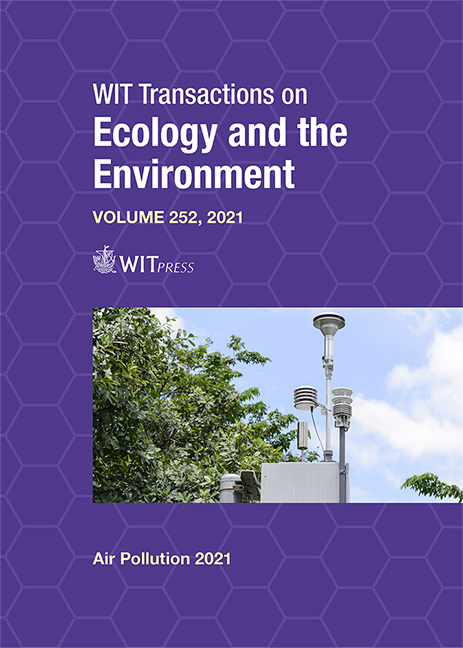INDOOR RADON ASSESSMENT IN SCHOOL BUILDINGS: WHERE, WHEN AND HOW TO MEASURE?
Price
Free (open access)
Transaction
Volume
252
Pages
14
Page Range
163 - 176
Published
2021
Paper DOI
10.2495/AIR210151
Copyright
Author(s)
PAULO BARROS, ANTÓNIO CURADO, SÉRGIO I. LOPES
Abstract
A pre-selection procedure for sample choice in an extensive experimental campaign for indoor radon assessment is mandatory to ensure the homogeneity of the case study to be monitored. The implementation of a simple methodology for room selection guarantees more homogenized measurement results for later comparison and analysis. Hence, the case study for in-situ instrumentation must include a representative and homogeneous sample of the whole, with a particular focus on rooms occupied daily during the working day, namely offices and cabinets for staff. All buildings under monitoring hold a substantial number of rooms that should be assessed for radon potential evaluation, however, due to the reduced time frame for in-situ instrumentation and the shortage of radon detectors, only a representative sample can be picked for monitoring. Given the constraints, a straightforward methodology for sample selection based on the evaluation of the most relevant criteria that influence radon risk exposure – occupancy, site geology, room type, room size and floor location, air renovation, building materials, etc. – is a key process to ensure the quality of the experimental campaign. An experimental campaign for indoor radon assessment will be carried out during Spring of 2021 for evaluating the impact on indoor air quality (IAQ) during school reopening, after a long lockdown period due to COVID-19, which lasted from 15 January 2021 to 19 April 2021. The higher education institution to be evaluated includes six distinct schools spread in several geographically dispersed locations in the north region of Portugal and will be monitored to assess radon concentration, atmospheric pressure, and other hygrothermal parameters. In the end, the result will rely on a matrix that prioritizes the most relevant parameters on radon potential analysis by applying a three-level scale for scoring: low, moderate, and high. Each of these levels will be associated with a score scale allowing the design of a multicriteria analysis for the selected criteria, thus building a methodology for sample selection in complex scenarios for in-situ monitoring.
Keywords
IAQ, radon, assessment, sample selection, multicriteria analysis matrix





